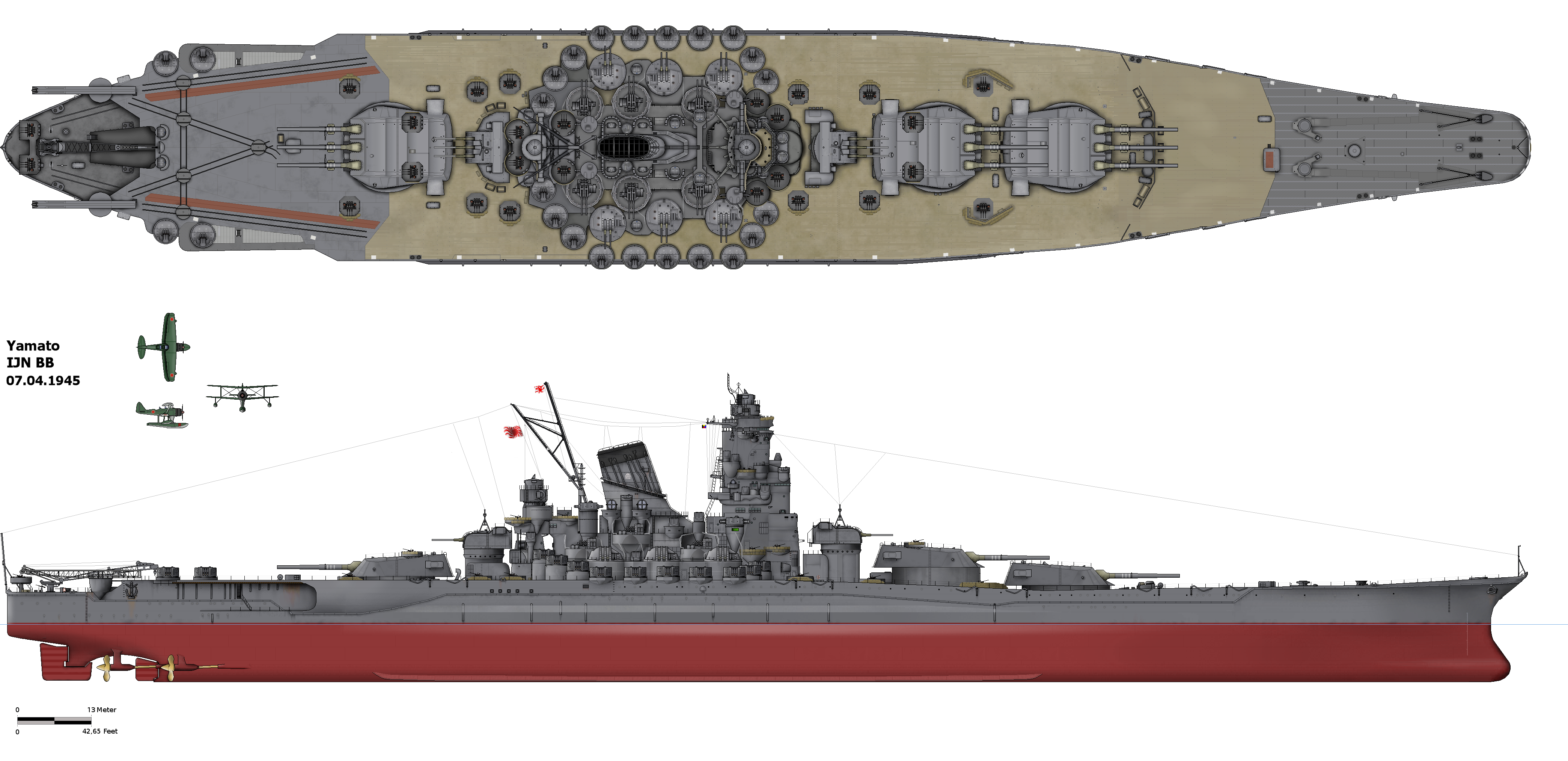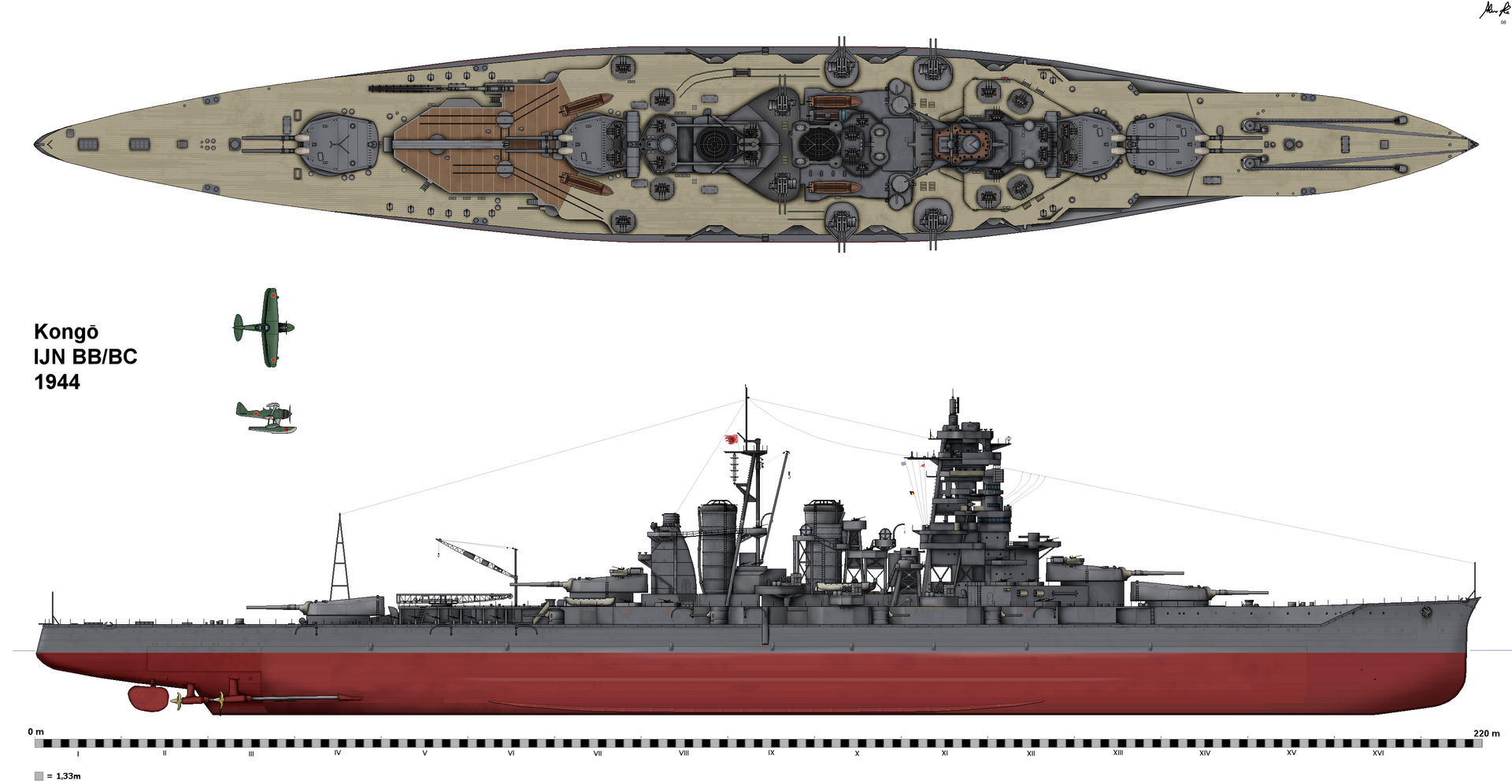As said, the hydrodynamics of the hull left the rear magazines vulnerable to more horizontal trajectories thru the main belt there. [See top pic in this article: not linkable alas]
The ship had been due for a major reconstruction in 1940, including replacement of the propulsion plant, which would have left her resembling a modified Renown, but the war situation meant she could not be spared. The secondary armament in particular had no HA capability, and was regarded as so much dead weight by 1941.
I hate secondary armaments with no sense of humor.
Totally agree, but I believe she had a refit after the 26 knot assessment. IIRC, she did 28 knots chasing Strasbourg and sustained 28 knots to intercept Bismarck.
The problem is, ships are expensive so naval combat is usually fought using more old ships than new ones. When the Bismarck broke out the RN had just 2 new battleships and about a dozen old ones. Most of them were too slow. The 2 Renown class battlecruisers were fast enough but not sufficiently armored to face Bismarck.
The task force needed more than just Prince of Wales, and Hood was still among the most powerful ships in the world and was fast enough to keep up. IMHO it was wise to deploy her, but she shouldn’t have been in the lead; the more heavily armored PofW should have led.
Yeah. the nature of warfare is you bring what you have, plan for the worst, and hope for the best. And work like hell to manufacture as much luck and advantage as possible.
Lots of armchair warriors are good at assuming your side always has the qualitative edge. IRL often that’s not true. The early days of WWII were a shambles for the Allied side on land, sea, and in the air due to obsolete equipment, not much of it, and a peacetime leadership cadre. There were individual local exceptions here and there, but that was the gestalt big picture.
A couple years later the tides had turned on all those limitations. But fighting on your back foot is the usual way this stuff starts, since the aggressor has the advantage of timing on starting the war itself, if not the timing of many subsequent battles.
I thought there was not much that could be done to help the Hood. Her powerplant sure. But the armor and weapons I thought were a problem because she already had a low freeboard which meant she was not well suited to the North Sea’s rough weather.
As if to illustrate the point, Germany, of course, had only one battleship at all at the time, and it didn’t last two weeks into its first mission.
Battleships were HUGE industrial projects, effectively like constructing a fairly large skyscraper but you have to make the skyscraper float and still withstand torpedo attacks.
It was economically certain that countries, having invested God-awful sums of money in these gigantic things, would try to keep them running a long time. You couldn’t afford not to. The battleships sunk or damaged at Pearl Harbor were all 20-30 years old.
If you look at the rebuild given to Renown you can see a blueprint for Hood’s. The new power plant would be smaller and lighter, which frees up tonnage to increase the deck armor. Removing the 5.5” secondary armament (not AA capable) and the 4” heavy AA frees up tonnage for a dual-purpose 4.5” or 5.25” secondary armament.
They made a Hood-sized mistake: the put the photo online. Now we all have access to a digital copy. Who needs the original?
It’s a nice picture of a beautiful ship. I’d hang it in our living room, but I want to stay married.
Very pretty. And very clean lean lines. The lack of anti-aircraft guns, the lack of comm & radar antennas all give it a look of pure big-bore offense.
I’m not a fan. I admire the pre-dreadnaughts for the weirdness and wackiness, and I love the post-Washington Naval Treaty fast battleships - the Yamato is probably the most beautiful warship ever built - but the 1910s-1920s battleships and battlecruisers have always felt kind of crude and clunky to me.
Definitely Hood had a vintage-specific look. To my eye not quite modern, but not crudely primitive either. Simple and elemental.
And agree about Yamato and maybe Bismarck and Iowa as best evars. All in the early days before the superstructure turned into a rats’ nest of antennas.
I’d say the Japanese ones with their “pagoda” masts definitely take the cake in the ugly competition:
There’s a thin line between beautiful and grotesque, sometimes. Your example is on the latter side; this, though, is perfection:
I don’t think that picture was taken in the Firth of Forth, the geology is wrong for the area. I’m not convinced it was taken anywhere around the UK.
Some of us like ships with some meat on their bones.
Besides, look at the placement of their superstructures. Yamato look like a sportscar; Kongo looks like a tugboat.


